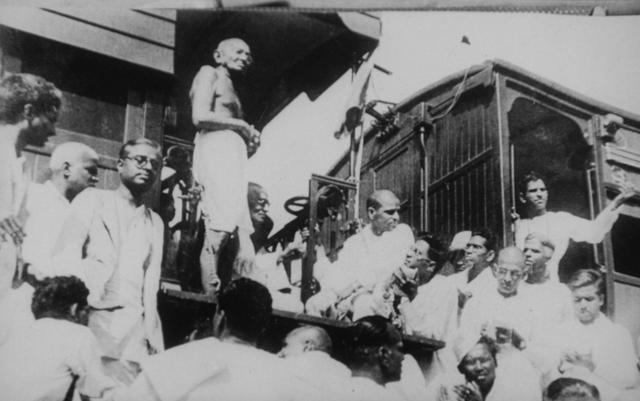In today’s world, where we often see people vying for attention through social media trends like “xx Women’s Guide,” the idea of being born into wealth or privilege makes some people the subject of admiration and envy. However, in many parts of India, those born into lower social classes face far more than just envy; they are often stripped of basic human rights, forced into degrading labor, and subjected to severe social restrictions, including within marriage. If someone dares to marry outside their caste, they might even face imprisonment or, in extreme cases, “honor killings.”

This reality is tied to India’s deeply entrenched caste system, a social hierarchy that traces its origins back thousands of years. But how did such a system emerge, and what relevance does it hold in modern society? Let’s explore this fascinating, yet painful aspect of India’s history, its cultural impact, and how it continues to shape the country today.
The Origins of the Caste System: An Inherited Legacy
The caste system in India didn’t appear overnight; it was shaped over millennia, deeply intertwined with the country’s cultural and religious evolution. One of the earliest significant events that contributed to the caste system was the invasion of the Indo-Aryans, who arrived from Central Asia around 1500 BCE. These invaders, with their distinct cultural practices and racial features, created a system to segregate themselves from the indigenous populations. To maintain their dominance, they formulated a rigid class structure that still impacts India today.
This system was rooted in religious texts, particularly the Vedas, where the four main castes were assigned based on divine creation: Brahmins (priests), Kshatriyas (warriors), Vaishyas (merchants), and Shudras (laborers). The narrative was simple: the Brahmins, for example, were created from the mouth of the gods and thus held the highest status, while the Shudras, created from the feet, were the lowest. Below them were the Dalits, formerly called “Untouchables,” who were considered so impure that they were excluded from this hierarchy altogether.
The Social and Cultural Impact
The caste system’s impact on Indian society has been profound. It not only segregated people by occupation and social status but also dictated their daily lives. For centuries, the rigid boundaries of the caste system restricted access to education, political power, and even basic social interactions for those in lower castes. For example, the Dalits were often relegated to the dirtiest and most menial jobs, such as cleaning streets or handling corpses.
Religiously, the caste system became intertwined with Hinduism, reinforcing social stratification through the belief in karma and reincarnation. It was commonly believed that one’s caste was a result of actions in past lives, thus encouraging people to accept their roles in society without question. Those born into lower castes were often told that their fate was sealed and that they must endure their suffering until they could be reborn into a higher caste.
From the Past to the Present: The System’s Enduring Legacy
Despite India’s independence in 1947, the caste system continues to affect millions of people, especially in rural areas. Though the Indian constitution abolished caste-based discrimination, the social realities for many still reflect the deep-seated divisions within society. The concept of Sanskritization, where lower castes try to emulate the rituals and customs of higher castes to improve their social standing, remains a common but difficult path to upward mobility.
In modern times, the caste system is most visible in politics, where caste-based identities often play a significant role in elections. Historically, the Brahmin caste held significant power in India’s political structure, but today, politicians from various castes, including those from historically marginalized groups, have risen to positions of power, challenging the old social order. Prominent figures like Mahatma Gandhi, who fought against untouchability, and Dr. B.R. Ambedkar, who worked to uplift the Dalits, have been instrumental in challenging these traditional norms.
The Changing Face of the Caste System
Although the caste system is technically illegal, its legacy still lingers, especially in rural regions. For many, caste identity still influences where they live, whom they marry, and the work they can do. However, as India continues to urbanize and modernize, new economic opportunities are beginning to diminish the importance of caste in the urban middle class. Many Dalits have used education and economic success to rise above their station, while others have found solidarity in the Buddhist faith, following the example of Dr. Ambedkar, who converted to Buddhism as a form of protest against the oppressive Hindu caste system.
Today, caste-based discrimination is being addressed through various affirmative action programs, but the question remains: Can a deeply ingrained social structure, one that has existed for millennia, truly be dismantled in a single generation?
Connecting the Past to the Present: Lessons for Modern Society
The caste system’s persistence into the 21st century is a stark reminder of how social systems can perpetuate inequality for generations. It serves as a reminder of the power of culture and religion in shaping societal structures. Modern India, while far from perfect, is making strides in overcoming these historical divisions. However, the challenge remains, particularly as caste still influences everything from job opportunities to access to healthcare and education.
For those in the West who may view caste-based discrimination as a relic of the past, it’s important to understand that this system has been far more than just a historical artifact. Its effects continue to resonate in modern society, shaping lives in ways both subtle and profound.
As India continues its journey towards equality, the global community can learn valuable lessons about how deeply ingrained systems of oppression can be dismantled—though it takes time, concerted effort, and societal willpower to truly create change. In a world that increasingly values equality and inclusivity, the battle against caste-based discrimination remains one of the most pressing human rights challenges of our time.

No comments yet.